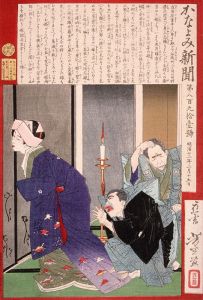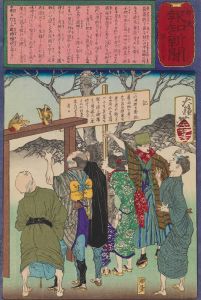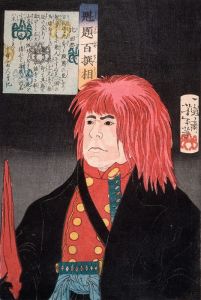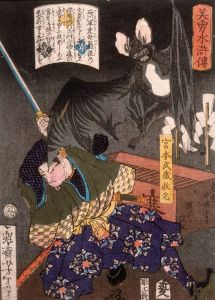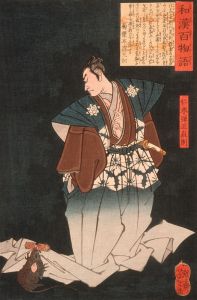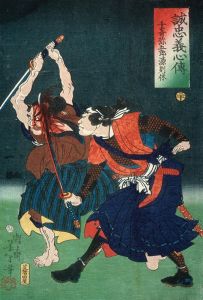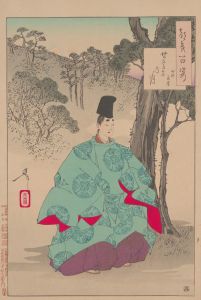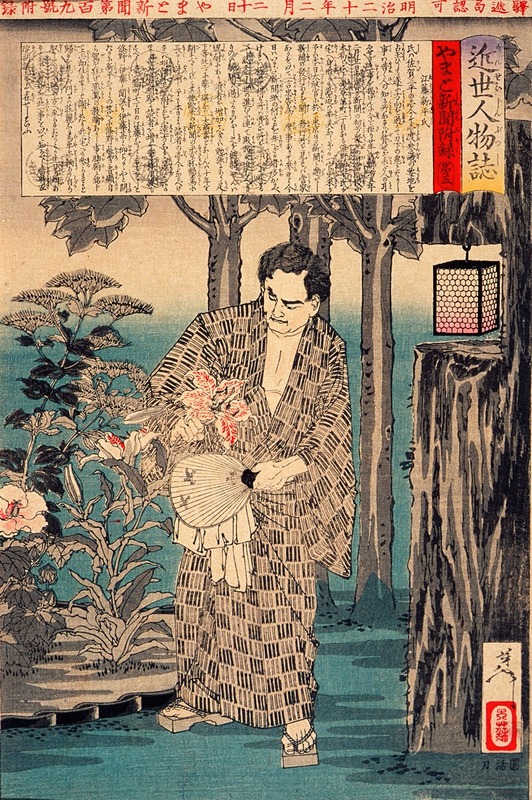
Etō Shinpei
A hand-painted replica of Tsukioka Yoshitoshi’s masterpiece Etō Shinpei, meticulously crafted by professional artists to capture the true essence of the original. Each piece is created with museum-quality canvas and rare mineral pigments, carefully painted by experienced artists with delicate brushstrokes and rich, layered colors to perfectly recreate the texture of the original artwork. Unlike machine-printed reproductions, this hand-painted version brings the painting to life, infused with the artist’s emotions and skill in every stroke. Whether for personal collection or home decoration, it instantly elevates the artistic atmosphere of any space.
Etō Shinpei by Tsukioka Yoshitoshi is a woodblock print created by the renowned Japanese artist Tsukioka Yoshitoshi (1839–1892). Yoshitoshi is widely regarded as one of the last great masters of the ukiyo-e tradition, a genre of Japanese art that flourished from the 17th to the 19th centuries. This particular work is part of Yoshitoshi's series titled Kinsei Kyōgiden (Biographies of Modern Men), which was published in the late 19th century. The series features portraits of notable historical and contemporary figures, often depicted in dramatic or poignant moments.
Etō Shinpei (1834–1874) was a prominent Japanese statesman and samurai during the late Edo and early Meiji periods. He played a significant role in the political and social transformations that marked Japan's transition from a feudal society to a modern state. Etō was a key figure in the early Meiji government and served as the Minister of Justice. However, he became disillusioned with the direction of the government, particularly its centralization policies and its handling of samurai privileges. In 1874, Etō led the Saga Rebellion, an armed uprising against the Meiji government. The rebellion was ultimately suppressed, and Etō was captured and executed.
In Yoshitoshi's depiction, Etō Shinpei is portrayed with a striking and intense expression, reflecting his determination and the dramatic circumstances of his life. The print captures the tension and turmoil of the era, as well as Etō's personal struggles and ultimate fate. Yoshitoshi's use of bold lines, intricate details, and vivid colors exemplifies his mastery of the ukiyo-e style, while also conveying the emotional depth of his subject.
This work is significant not only as a piece of art but also as a historical document. It provides insight into the cultural and political climate of Meiji-era Japan, as well as the ways in which historical figures were remembered and represented in popular media. Yoshitoshi's Kinsei Kyōgiden series, including the portrait of Etō Shinpei, remains an important example of how traditional Japanese art adapted to the rapidly changing world of the late 19th century.







